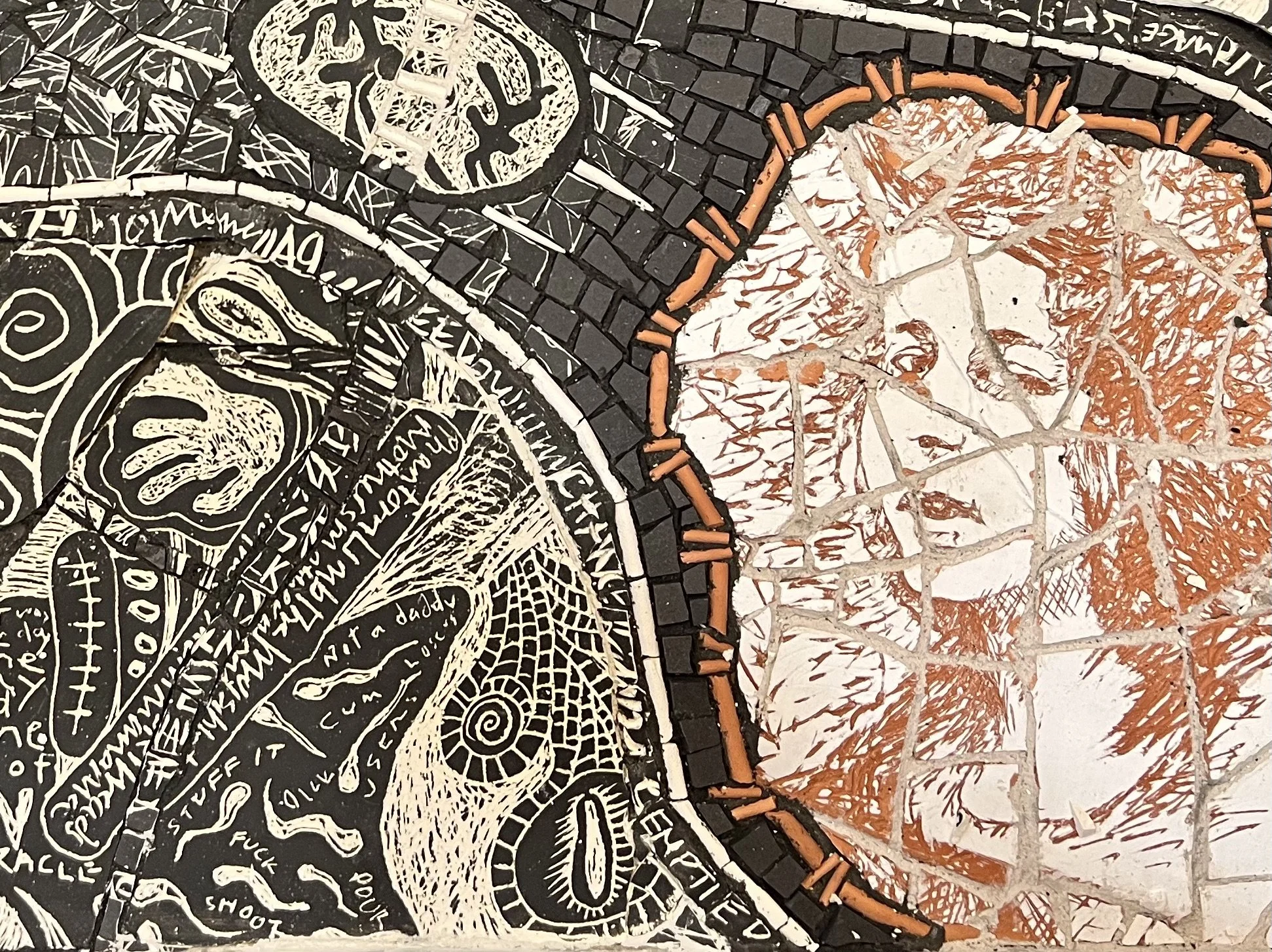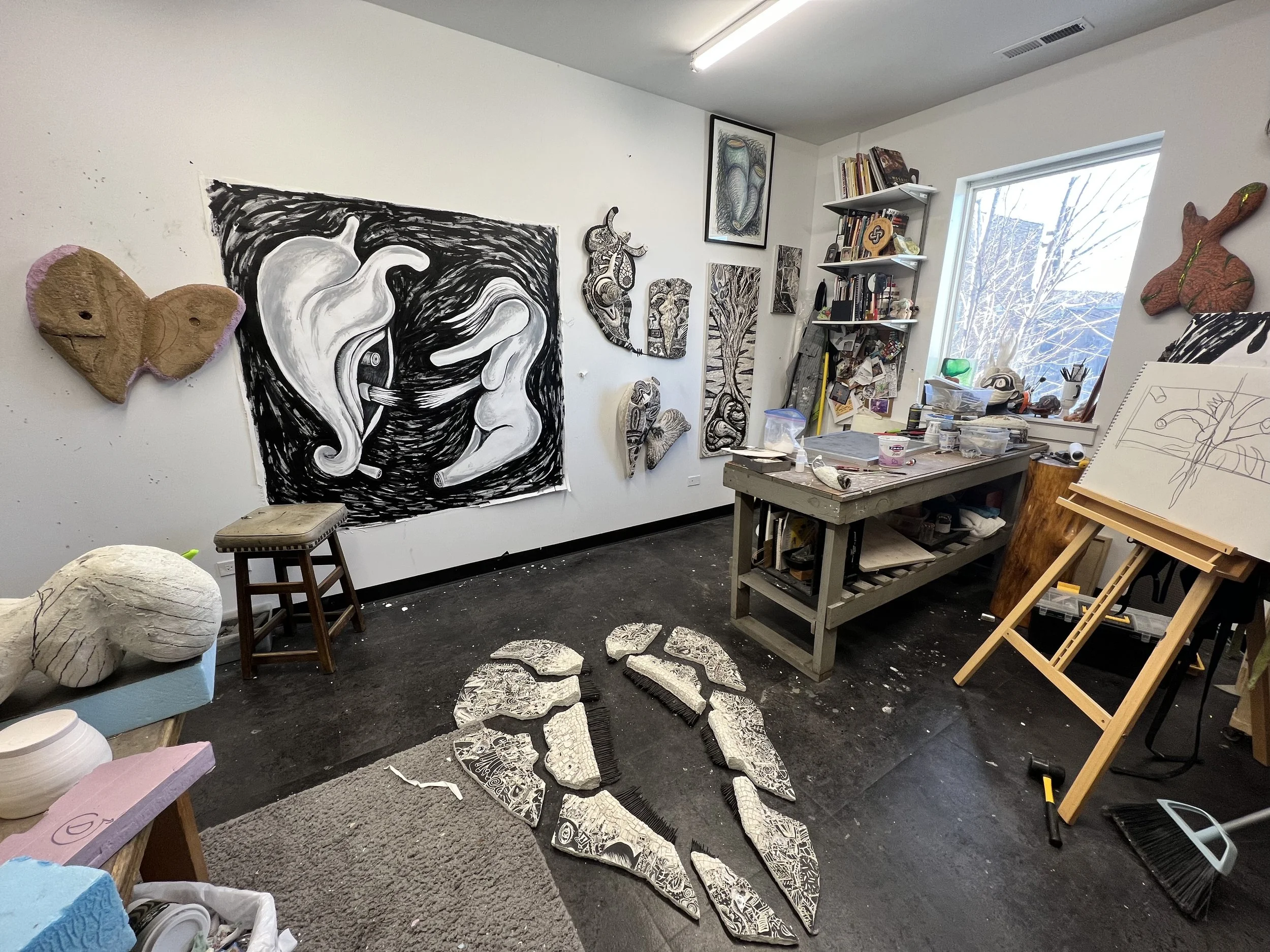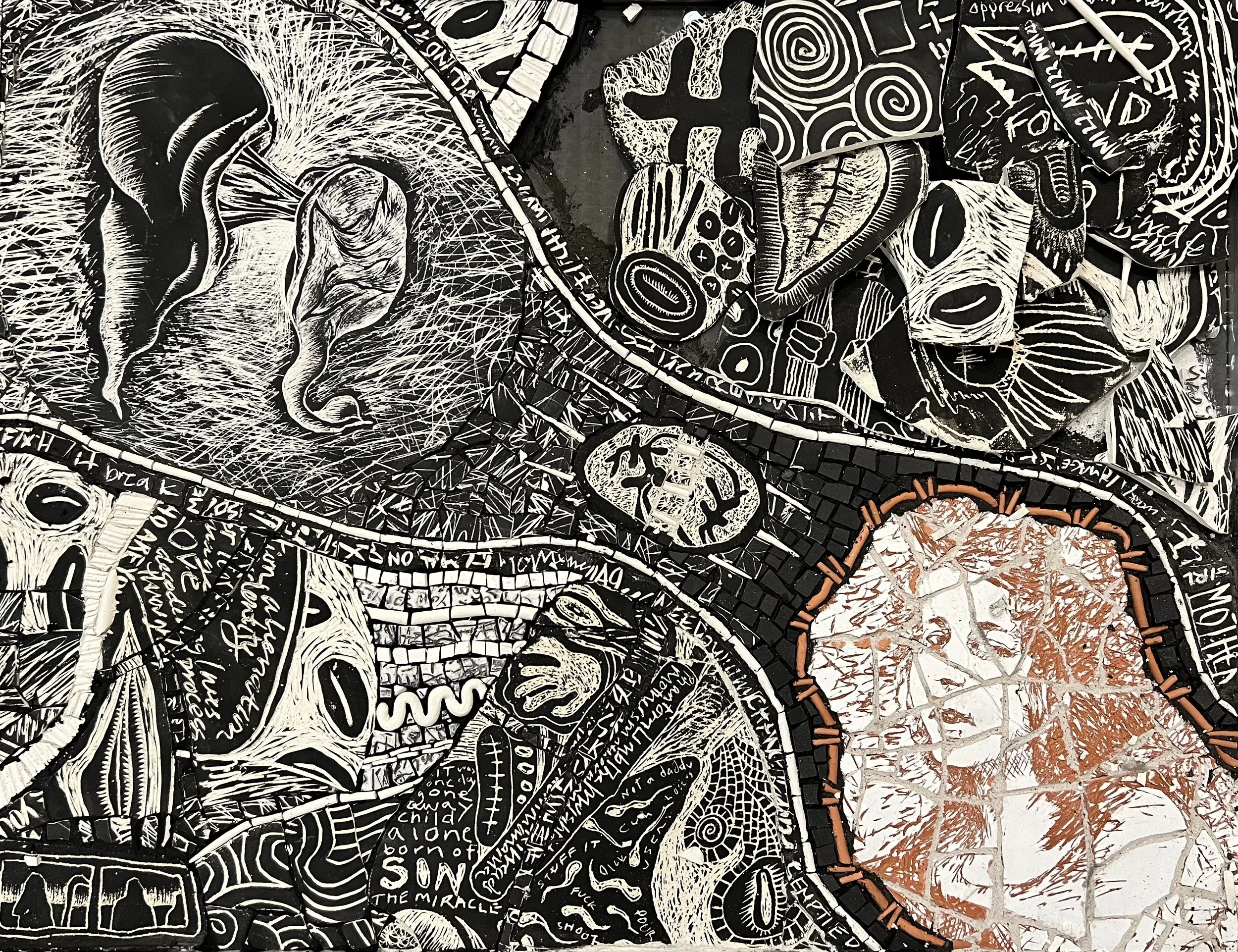Slow but steady
Reading Blog 2/23
AURAL ORAL: LISTENING AS A PRECURSOR TO RESPONSE-ABILITY WITH GRACE DENIS
1. The Mushroom at the End of the World: On The Possibility Of Life In Capitalist Ruins by Anna Tsing. Princeton University Press:
“If we end the story with decay, we abandon all hope—or turn our attention to other sites of promise and ruin, promise and ruin.”
This statement is how I approach life and survive trauma and difficulty. There is beauty in scars and ruin and decay- there is evidence of time and its cruelties. Our bodies and the planet are amazing sites for shifts, adjustments, and transformations.
“Precarity is the condition of being vulnerable to others. Unpredict- able encounters transform us; we are not in control, even of ourselves. Unable to rely on a stable structure of community, we are thrown into shifting assemblages, which remake us as well as our others. “
I sobbed when I read this statement as it embodies my research and my art practice. This concepting of invention and/or rebuilding is part of my art practice methodology. I have sought connection and community when I have relocated and have always found these pieces of support to be foundations for practice and friendship and social action. Nothing stays the same- the earth, our bodies- always shifting and compromising to time and space.
“Agency,” “consciousness,” and “intention,” The forward march is progress (progression), a movement forward, towards an unknown. “…look around not just look ahead.” Thinking through assemblage urges us to ask:
a) How do gatherings sometimes become “happenings,” that is, greater than the sum of their parts?
- Is a communal ideology, a gathering of many elements, an empowerment of number and expression of a unified vision (vs. a disconnected diversity) a dangerous concept?
b) If history without progress is indeterminate and multidirectional, might assem- blages show us its possibilities?
-Yes. Like mosaic, collage, assemblage and creative research (by gathering contrasting and dissimilar ideologies and methods and fragments) - by proximity and inter-relationships new concepts and creative connection can be established. This approach to imagining facilitates new opportunities and considerations for coping and living in the now.
New tools for noticing, listening and responding may interrupt progress, creating a pause to see things differently. In many ways, the Covid-19 pandemic inadvertently made a space for rethinking concepts of time and possibility. Slowness and quiet, the very real unpredictability of future-ness disrupted our non-listening. Pondering the ruins allows consideration of past present and future, a meditation on our suffering and the possibility for healing,
2. Staying with the Trouble: Making Kin in the Chthulucene by Donna Harway. Duke University Press.
The dangers of the non-thinking society (welcome to Trumps anti-intellectualistic America) and it’s opposite:
Compassion.
I found the description of Eichmann as a detached, an anti-human human, his ‘thoughlessness’ towards humanity, the future, the definition of evil as a patriarchal insensitivity towards nature and generational future-ness. Is compassion a feminist approach to the Anthropocene? Perhaps, yet Gaia is not. Mother-earth can be loving and nurturing and life giving and alternatively destructive and brutal - “ a complex systemic phenomena “. A compassionate and sensory-thinking society can accept damage and death through mourning. Mourning is a form adaptation and sustainability that allows processing of loss and the resultant changes and new structures created by loss.
“Mourning is about dwelling with a loss and so coming to appreciate what it means, how the world has changed, and how we must ourselves change and renew our relationships if we are to move forward from here. In this context, genuine mourning should open us into an awareness of our dependence on and relationships with those countless oth- ers being driven over the edge of extinction . . . The reality, however, is that there is no avoiding the necessity of the difficult cultural work of reflection and mourning. This work is not opposed to practical action, rather it is the foundation of any sustainable and informed response. “
“Gaia puts into question our very existence, we who have pro- voked its brutal mutation that threatens both human and nonhuman livable presents and futures.”
Practicing the Research 2/23
Work in Progress
Making sense of fragments, snippets, moments, fleeting faces, urges and reactions, elements embodying tomorrow and yesterday.
How to make sense of these memories, how can I contextualize these fragments of time and feeling, of words and image? A life of parts and pieces. How do we curate our memories and our life stories? What do we keep and what do we discard and bury? My identity is curated; my memories -selected, stories reclaimed to make use of their meanings.
The Rashomon effect - contradictory interpretations, descriptions or recollections “provide different perspectives and points of view of the same incident”. Eyewitnesses to a time or place or incident can be, unreliable, as in the film 1950 Rashomon. Tales of the past, told through witnesses or through stories passed down through familial generations, are mosaics of memory. My recollection of a time or event is different than yours. I saw it through my eyes, my perspective clouded by my mood, my history, my position in the space. These affects hold our own unique truths in a time when no hands held iphones and there were no visual records of every moment. Histories were passed through spoken and written words, errant photographs, and nostalgic objects and mementos. How can I recollect a life that isn’t my own?
Sharing research is uncomfortable and I am working to engage more. For decades, I have been working behind the curtain, never moving to reveal how the “sausage is made” . Let the work speak for itself was a mantra that worked for my practice; it was a test of the success of my work and the ability for my imagery to communicate the unspoken. What happens in the studio, and how a decades old practice evolved, is -at this point in my career- imperative for my growth as an artist, community activist and educator. My practice/research is leading me to the sources and approach to creating and living as a desire for connections, associations and proximity; all part of my story from my actual true first breath.


